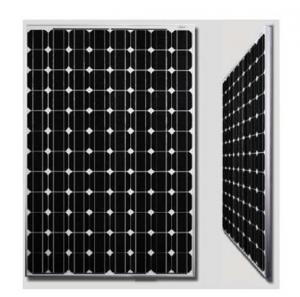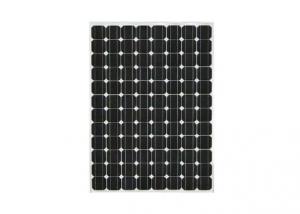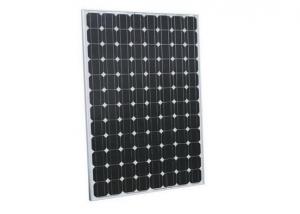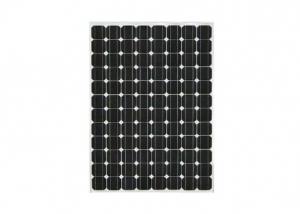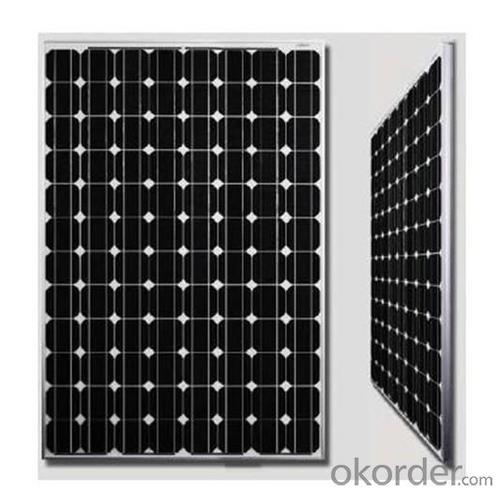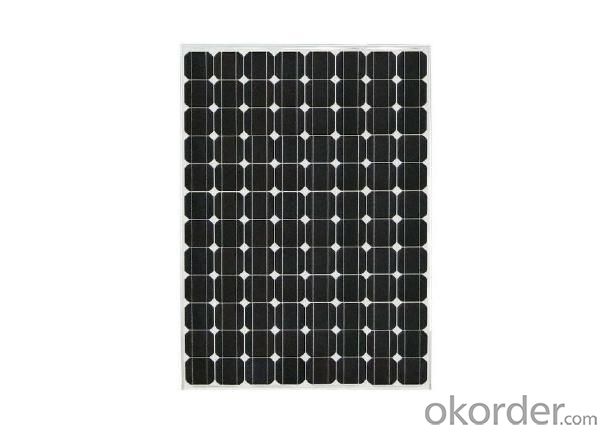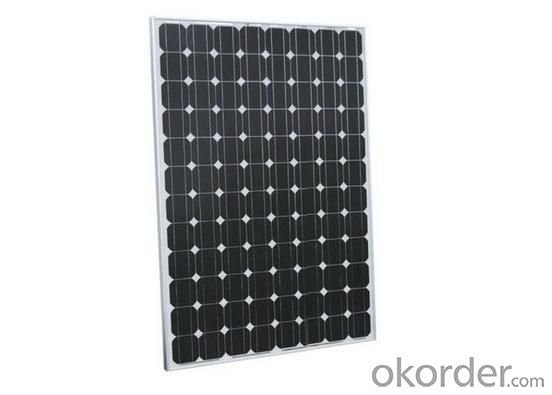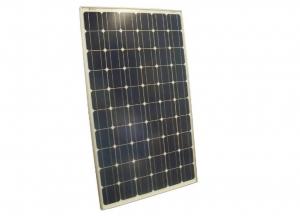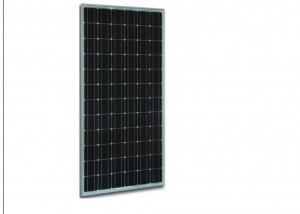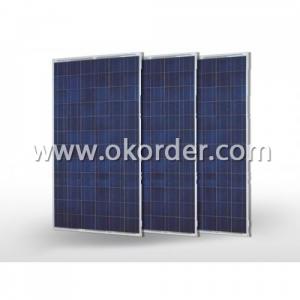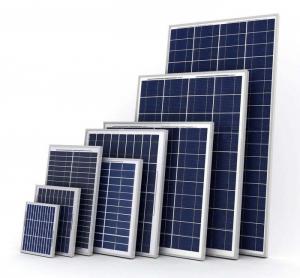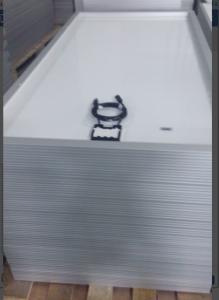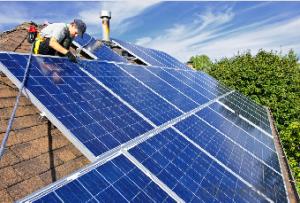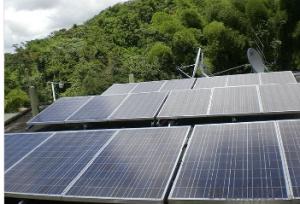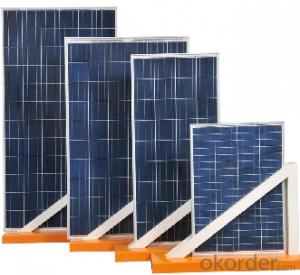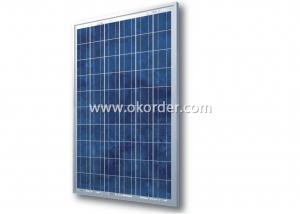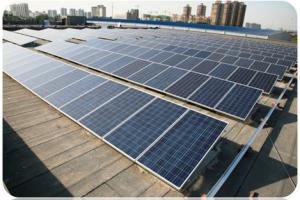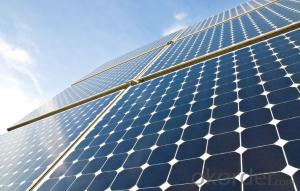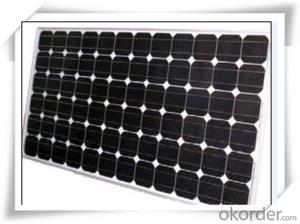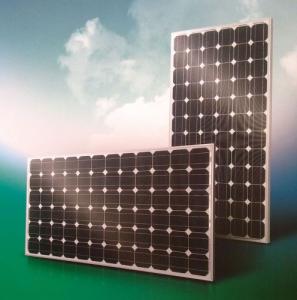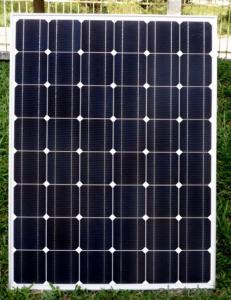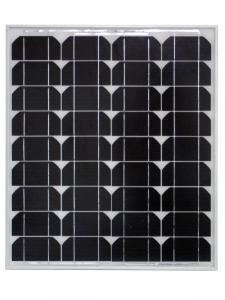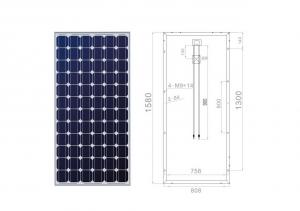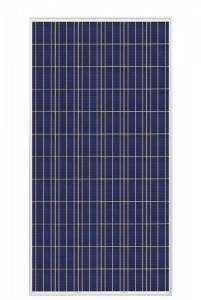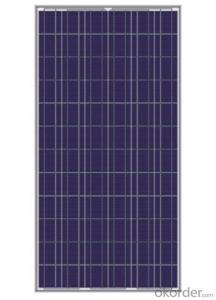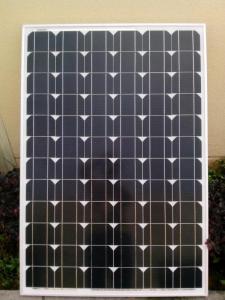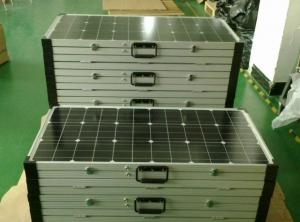Mono Solar Panels CNBM 240W-260W
- Loading Port:
- China Main Port
- Payment Terms:
- TT or LC
- Min Order Qty:
- 100 watt
- Supply Capability:
- 10000 watt/month
OKorder Service Pledge
OKorder Financial Service
You Might Also Like
Characteristics of Mono Solar Panels CNBM 240W-260W
I.Solar Cell : High efficiency crystalline solar cell. Even if under the weak light, the solar module can produce maximum power output.
II.Tempered glass (toughened glass): Anti-reflecting coating and high transmission rate glass increase the power output and mechanical strength of solar module.
III.EVA and TPT: Using high quality EVA and TPT to prevent destroying and water.
IV.AI frame: Without screw, corner connection. 6 holes on the frame can be installed easily.
V.Junction box: Multi function junction box with water proof.
VI.Long lifetime: ≥25 years; Less power decrease.
VII.Good performance of preventing from atrocious weather such as wind and hails.
VIII.Resisting moisture and etching effectively, not effected by geology.
IX.The certificate issued by international authority: UL, TUV, IEC, VDE, CE.
Standard Test Conditions of Mono Solar Panels CNBM 240W-260W
The opto-electrical specifications shown below are stabilized values being measured at Standard Test Conditions, Irradiance: 1000W/m2, Spectrum: AM1.5 at 25°C, The info below is subject to manufacturing tolerances. Where appropriate minutes of measurement are available and are used for the dimensioning of the installation.
Advantages of Mono Solar Panels CNBM 240W-260W
• CNBM Solar performance guarantees for 25 years
• 10 years guarantee for workmanship
• Timeliness of delivery
• Quality Products certified (TÜV, UL, CE, VDE, ISO)
CNBM International Corporation's products including Monocrystalline Solar Panel, Polycrystalline Solar Panel have received and enjoyed famous reputation in many countries and regions in the world .As a solar panel manufacturer in China, we strive to provide our customers with excellent service, superior products and unmatched value.
Datasheet of Mono Solar Panels CNBM 240W-260W
Characteristics of Mono Solar Panels CNBM 240W-260W | |||||
Max Power Voltage Vmp(V) | 50.0 | 50.5 | 51.0 | 51.5 | 52.0 |
Max Power Current Imp(A) | 4.80 | 4.85 | 4.90 | 4.96 | 5.01 |
Open Circuit Voltage Voc(V) | 60.4 | 61.1 | 61.7 | 62.3 | 62.9 |
Short Circuit Current Isc(A) | 5.30 | 5.35 | 5.40 | 5.45 | 5.50 |
Max Power Pm(W) | 240W | 245W | 250W | 255W | 260W |
Temperature Coefficient of Mono Solar Panels CNBM 240W-260W | |
NOCT | 45℃±2℃ |
Temperature Coeffucients of Isc (%/℃) | 0.0981 |
Temperature Coeffucients of Voc (%/℃) | -0.5186 |
Temperature Coeffucients of Voc (%/℃) | -0.4601 |
Mechanical Data of Mono Solar Panels CNBM 240W-260W | |
Dimension | 1580 × 1069 × 45 mm |
Weight | 25.8 kg |
No. of Cells and Connections | 96 (8 × 12 ) |
Tolerance | 0~5W |
Cell | Monocrystalline Cell 125 × 125 mm |
Packing | 616 Pcs / 40ft(H) Container |
Limits of Mono Solar Panels CNBM 240W-260W | |
Operating Temperature | -40℃ to +85℃ |
Storage Temperature | -40℃ to +85℃ |
Max System Voltage | 1000VDC(IEC)/600VDC(UL) |
Guarantees of Mono Solar Panels CNBM 240W-260W | |
Products Guarantee | 10 yrs free from defects in materials and workmanship |
Performance Guarantee | No less than 90% within 10yrs and no less than 80% within 25yrs |
Certificates | TUV(IEC61215&IEC61730),VDE(IEC61215&IEC61730),UL,CE |
The IV Curve of Mono Solar Panels CNBM 240W-260W
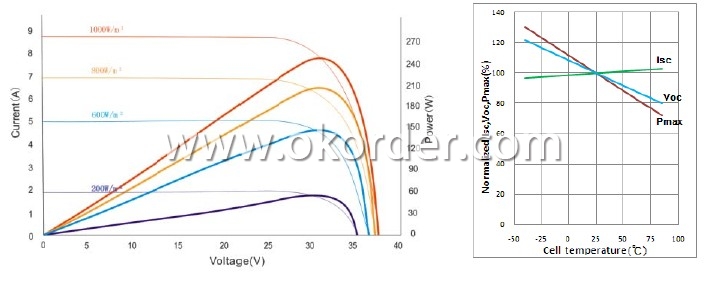
Picture 1. The factory of Mono Solar Panels CNBM 240W-260W
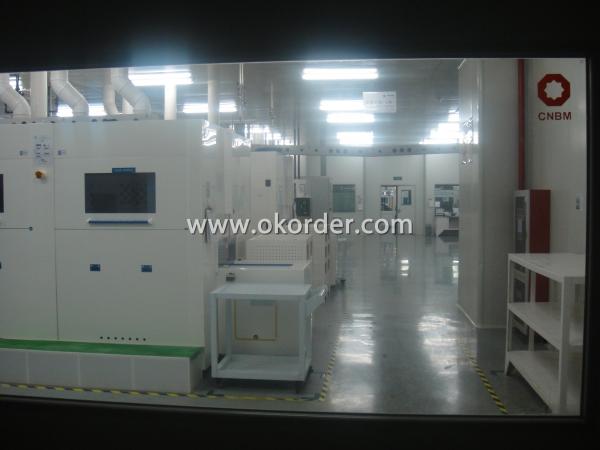
Picture 2. Production of Mono Solar Panels CNBM 240W-260W
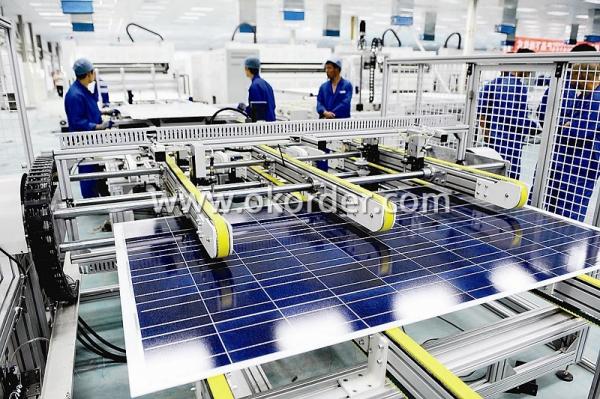
Picture 3. Packages of Mono Solar Panels CNBM 240W-260W
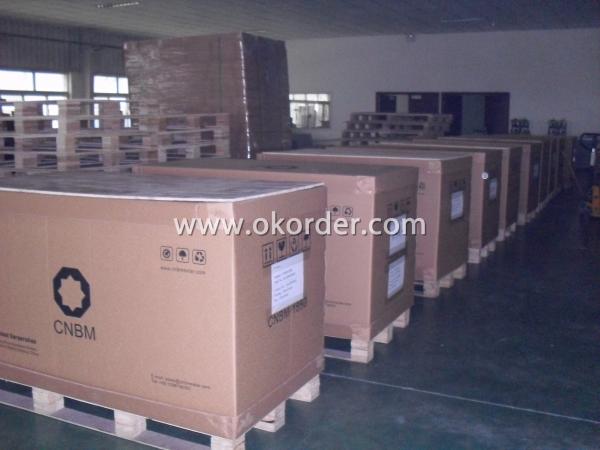
WHY CHOOSE US?
1. Excellent efficiency, Easy Installation & Maintenance
2. Outstanding performance in Low-Light
3. High transparent, Low-Iron, Tempered Glass
4. Ability to withstand High Wind-Pressure and Snow-Load
- Q: Can solar panels be used in urban areas with limited space?
- Yes, solar panels can be used in urban areas with limited space. Advances in technology have made it possible to use smaller, more efficient solar panels that can be installed on rooftops, balconies, and even walls of buildings. Additionally, solar panels can be integrated into various structures like solar canopies, awnings, or vertical facades, making them suitable for urban areas with limited space.
- Q: Can it be used on a cellphone so u never have to worry about low battery?
- A solar panel (photovoltaic module or photovoltaic panel) is a packaged interconnected assembly of solar cells, also known as photovoltaic cells. The solar panel can be used as a component of a larger photovoltaic system to generate and supply electricity in commercial and residential applications.
- Q: I have an electric bicycle that I travel to work by, pulling a modified child carrying trailer that holds two 2 volt deep cycle batteries in series to power the 24 volt bike motor. I'm thinking about adding a 50 watt solar panel (or larger depending on the room I can make available) to charge while I'm at work and to provide some extra juice while on my more distant travels.Can I get a solar panel to charge them while they're connected the way they are: in series? Does charging work that way?I've read that in order to charge the 24 volt battery setup (if the answer to the Q above is yes), the output from my solar panel would need to be a little more than 24 volts. Is this true? If so, how many volts?Since the bike is supposed to be powered at 24 volts and I have an x-volt (x gt; 24v) solar panel connected to it, will this cause any damage to the controller or other components while running them?Will it help supply power even while the motor is being run?Thanks.
- Yes, you have it right you need two 2V panels wired in series to give 24V to charge a 24 volt system. But along with the 24V you also want some amperage, otherwise it takes forever to charge. Most of the little chargers are called trickle charges because they only have an amp or two. If you had two 25 watt solar panels putting out 24V you have : watts = volts * amps 50 watt = 24V * x amps x = 2 amps If your battery is say 50 amp hours of storage, then if you are putting in 2 amps it will take you 25 hours of sunlight to power it back up from a dead battery. So the charge time depends on how many amps you are putting in there at 24V A car battery charger typically charges at 0 amps at 2V, so 2 * 0 = 20 watts of power going in there So if you go solar make sure to use a charge controller and a big enough panel to get close to 00 watts for any decent recharge time. The charge controller makes sure that the battery only gets voltage going one way and it least 24V. So if the sun went behind some clouds and the voltage dropped to 20V, the controller shuts off the current until the voltage equals 24V or more
- Q: Can solar panels be used to power a greenhouse?
- Yes, solar panels can be used to power a greenhouse. Solar panels convert sunlight into electricity, which can then be used to power various electrical systems in a greenhouse, such as lighting, ventilation, heating, and irrigation. This renewable energy source offers an environmentally friendly and cost-effective solution for greenhouse operations.
- Q: i am starting to consider getting solar panels instead of paying electric bills which are somewhat higher now than they used to be
- Solar power is expensive power. The costs have been coming down but unless it's the only option or there are government subsidies, it would still be less expensive to buy electricity from the grid. The way you compare the upfront costs of solar power with monthly bills is by the Internal Rate of Return equation or the Net Present Value calculation. Vendors will use the payback periods to try and convince you into a financial decision where they reap all the benefits so you need to learn how to do a proper financial analysis. The average US household uses about 950 kwh per month, unless you are very wealthy, you will not be able to afford enough panels for that and you probably don't have enough roof space. You will have to reduce your power usage as much as possible. Batteries are expensive and inefficient. Lead acid batteries are 95% efficient at discharging but only 50% efficient at charging. A battery based system would not only include the costs of the batteries but would also double the number of panels required. Lead acid batteries have their lives rated at only 20% draws on their capacities, they lose a lot of life with each deep cycle. There are deep cycle batteries which have thicker plates but they are also rated at 20% draw and a deep cycle battery's life would drop to 94% with just one deep cycle draw. This means, it's customary to buy five times your diurnal capacity worth of batteries, fortunately this allows for several cloudy days. If you do want to have deep discharges, buy Nickel Iron batteries. You will want a grid tied system instead where you sell the power you produced to the utility and buy back what you need effectively turning the grid into a 00% efficient battery. Of course, there are costs involved as the utilities would likely charge a monthly fee just to be hooked up so this cost must be taken into account. There is also the risk that the utilities may change their net-metering arrangements on you later.
- Q: why don't we take a cue from mother nature and make our soar panels like trees? thousands of leaves or needle (like a pine tree) instead of one big flat panel? I mean it seems to work pretty good for all the plants i see why would it not work for us. It would be aesthetically pleasing and with the right engineering wouldn't it make them not have to worry about tracking the sun? i already have some ideas about the process of making them just no available labratory.
- Because we and the trees are trying to solve a different problem. We want electricity, a tree wants light (and some heat) for photosynthesis. In getting the electricity we use Silicon for solar panels. (Sometimes Gallium Arsenide). And we exploit the same thing in Silicon that allows them to be computer chips. The fact that they conduct differently when voltage is applied. But for a solar panel that is done essentially in reverse. We GET a voltage difference (electricity) from shoving energy through it. Look up junction bias on google or yahoo for explanation. But the DESIGN problem is: You have to couple these panels together the right way - according to their bias. You can't string them up willy nilly. There is a pattern. And when one breaks in this pattern. (I mean when the actual panel cracks, which they do easily as they are brittle). It can change the overall bias. This can make even be worse than if it was removed, it can actually fight against the working ones. The efficiency is there in arranging them like a tree, but the practicality of maintenance would be daunting.
- Q: What makes them stop working after a while?
- could be temperature, poor design and U-V damage If they are outdoor lamps like mine it is more likely the rechargeable batterys are bad.
- Q: Its cloudy out and i have a solar panel that has 3, .5 volt cells But how do i charge it without sun any other ways?
- For the best answers, search on this site https://shorturl.im/awXJ0 The charge controller will protect the battery. You might want to think about getting a fuse.
- Q: how to build a solar panel
- Build okorder
Send your message to us
Mono Solar Panels CNBM 240W-260W
- Loading Port:
- China Main Port
- Payment Terms:
- TT or LC
- Min Order Qty:
- 100 watt
- Supply Capability:
- 10000 watt/month
OKorder Service Pledge
OKorder Financial Service
Similar products
Hot products
Hot Searches
Related keywords
